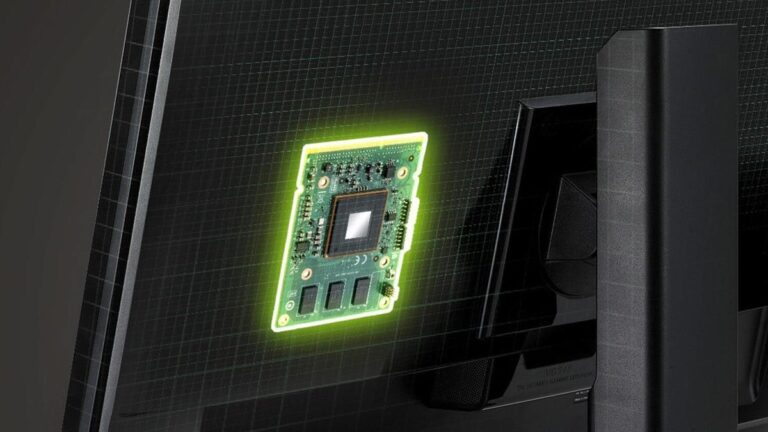While it’s not one of the big announcements the company usually makes, Nvidia has made some smaller announcements at Gamescom, a major annual gaming show in Germany.
Nvidia’s highly hyped Portal RTX mod, due for release in 2022, isn’t just a game changer, as it leverages the company’s RTX cards but is built using its 3D cloud Omniverse-based RTX Remix platform. Nvidia offered another preview of its upcoming shiny, reflective, moody mod, Half-Life 2 RTX, which debuted at CES in January.
It wouldn’t be Nvidia without an AI update. In this case, the company has compressed its Nemotron LLM NIM (a microservice that generates responsive content for AI-based characters) into a tiny language model (SLM) that can run on-device. Nvidia demoed the system in the yet-to-be-released Mecha Break with an interactive NPC that, unlike Nvidia’s usual ACE demos, not only chats but also offers advice on mech selection as a more useful (in theory) AI extra.
Of all the GeForce Now and DLSS announcements, only one really stands out: you can now link your GFN and Xbox Game Pass accounts, so you won’t have to sign in every time you play a PC Game Pass game, and you can sync your library just like you would with Ubisoft or Steam. Black Myth: Wukong and Star Wars Outlaws are also notable games coming at the service’s launch. At least 16 games are getting DLSS 3.x support, which is notable as a sign that the latest version is getting more attention. Typically, DLSS announcements still include a chunk of DLSS 2.x, which isn’t much better. Also, you’ll now have access to 25 handpicked CurseForge World of Warcraft add-ons from your paid GeForce Now account without having to sign in to your CurseForge account.
G-Sync hardware changes hands
The company is finally getting out of the G-Sync module hardware business, which is good news on all fronts and long overdue. The company is partnering with MediaTek to offload the hardware that differentiates G-Sync and G-Sync compatible monitors, including technologies that go beyond the basics like variable rate refresh support to reduce latency, improve color, tame motion blur, and increase clarity.
While not as well known as Intel or AMD (at least in the US), MediaTek is a major player in silicon, producing processors for Chromebooks, networking chips for laptops, media encoding/decoding chips, and most importantly in this case, the monitor’s built-in video scaler, which is exactly what it sounds like: it’s responsible for increasing or decreasing the resolution of what you see on your screen.
But today, what was once simple upscaling from a lower resolution to improve game frame rates has become a set of technologies that optimize the synchronization of your graphics card and your mouse and keyboard input with your display to meet your needs. Until now, Nvidia has built all of its optimization technologies into modules that monitor manufacturers build into their gaming monitors. G-Sync and G-Sync Ultimate Branding; Modules add to the cost and size of the monitor, making it more expensive than comparable monitors with less features.
While some monitor buyers aren’t all that price sensitive, the majority are, and if you’re willing to spend more on gaming gear, buying a better graphics card is often a better investment than buying a G-equipped monitor.
Since all of their monitors already have scalers, it would make a lot of sense for them to license the rest of their silicon design to MediaTek. However, this doesn’t mean that all MediaTek scalers will have G-Sync. The two companies plan to integrate G-Sync into multiple scalers so that they can be used in monitors with a wider price range. It’s unclear what that price range will be, but given MediaTek’s current mainstream market, we expect it will result in cheaper monitors due to the lower costs associated with production.
Nvidia didn’t announce availability dates or price ranges for displays powered by MediaTek G-Sync chips, but it did reveal three G-Sync monitors that support the Pulsar technology it announced at CES last January (which is essentially a combination of VRR and ultra-low motion blur to improve overall motion clarity): the AOC Agon Pro AG276QSG2, the Acer Predator XB273UF5, and the Asus ROG Swift 360Hz PG27AQNR. All three are 27-inch, 360Hz 1440p monitors that support HDR.

